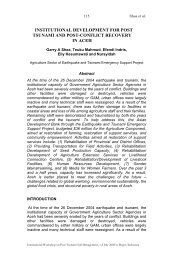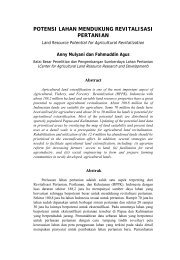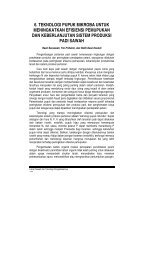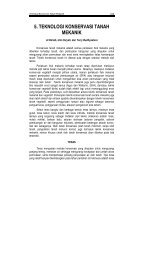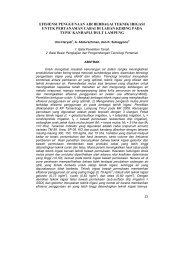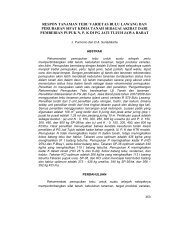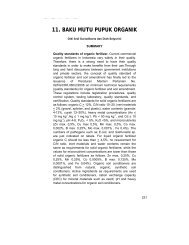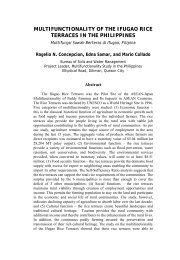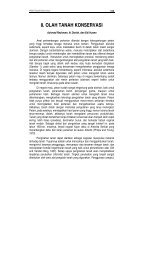Proceedings - Balai Penelitian Tanah
Proceedings - Balai Penelitian Tanah
Proceedings - Balai Penelitian Tanah
You also want an ePaper? Increase the reach of your titles
YUMPU automatically turns print PDFs into web optimized ePapers that Google loves.
40<br />
Abubakar and Basri<br />
Figure 3. Land returned to rice cropping in Lampisang, Lhoknga, Aceh<br />
Besar 2007<br />
From a soil chemistry point of view, rice fields categorised as light<br />
damage do not have salinity problems anymore. Leaching either<br />
conducted by purpose with irrigation or from rainfall has resulted in<br />
significant decrease in soil salinity and soil pH has recovered to about<br />
normal (6-7).<br />
The next step, suggested, to be taken is the rehabilitation of the<br />
remaining medium and heavy damage land in the west coast. The<br />
rehabilitation should be focused on reparation of drainage canals and<br />
removal of sediment, because these two important activities have not<br />
progressed satisfactory. Field observations showed that in peat soil and<br />
rain fed paddy field, rehabilitation of the drainage canals is crucial to<br />
agricultural recovery. Furthermore, the tsunami sediment also needs to<br />
be removed from the top soil surface, especially the sand, so that<br />
farmer can use and cultivate their paddy fields again. Several<br />
stakeholders, such as UNDP and other NGOs have started the removal<br />
of sediment from paddy fields on the west coast. We believe that these<br />
activities will be successful.<br />
Combating the regrowth of weeds on peat soil is a key obstacle to<br />
recommencing cultivation, this extra task has discouraged farmers<br />
and they have become hesitate to cultivate their land.<br />
International Workshop on Post Tsunami Soil Management, 1-2 July 2008 in Bogor, Indonesia



